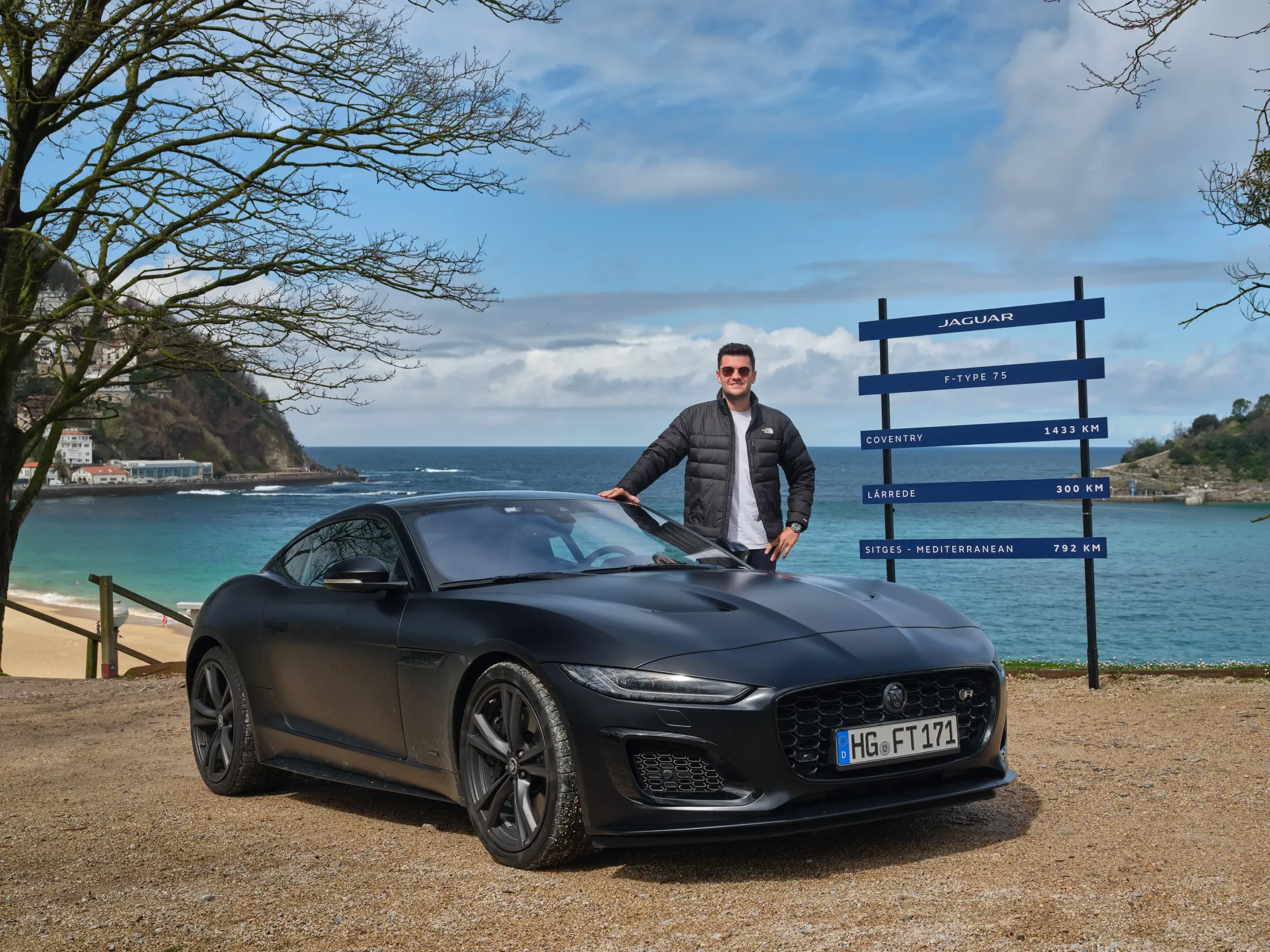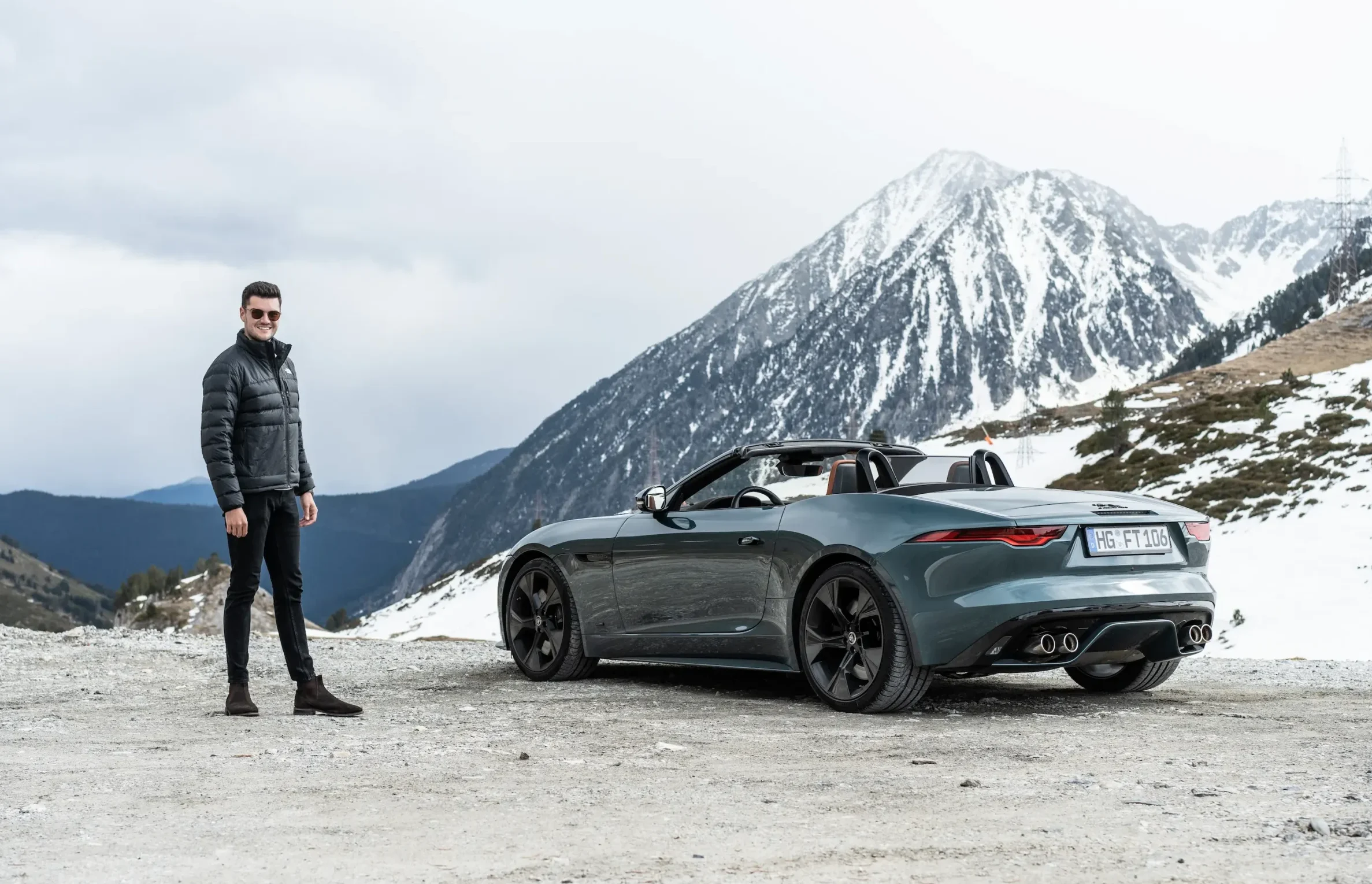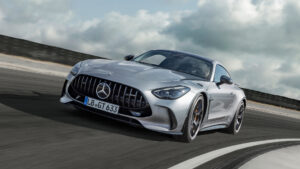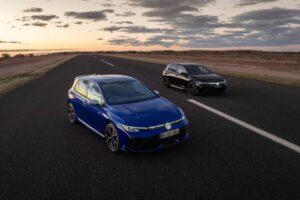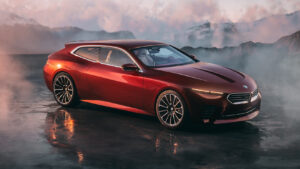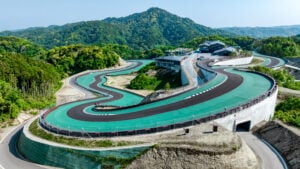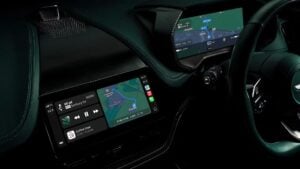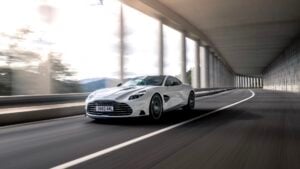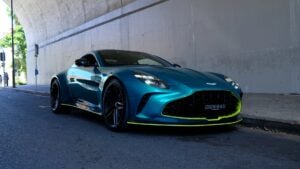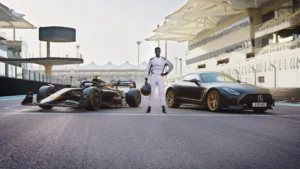There are certain phone calls you always take within two rings, and that’s because you know from experience they usually only mean one thing. In Jaguar’s case, it’s an imminent, two-day sojourn to the other side of the world.
Over the years Jaguar Land Rover has treated us to FIA Grade 1 race tracks in Portugal and taken us through the almost-holy ‘classic works’ garage at its HQ in Coventry. Now, we were being asked to consider an 800km journey across Spain to farewell the Jaguar F-Type at the wheel of the model’s twilight edition, the F-Type 75.
Incredibly, yes, we’re still talking about the F-Type. It’s outlasted many of its two-seater sports car competitors in Europe, and by the time curtains are called on it for MY24, the F-Type will have enjoyed a staggering 12-year model cycle (including a facelift in 2021).
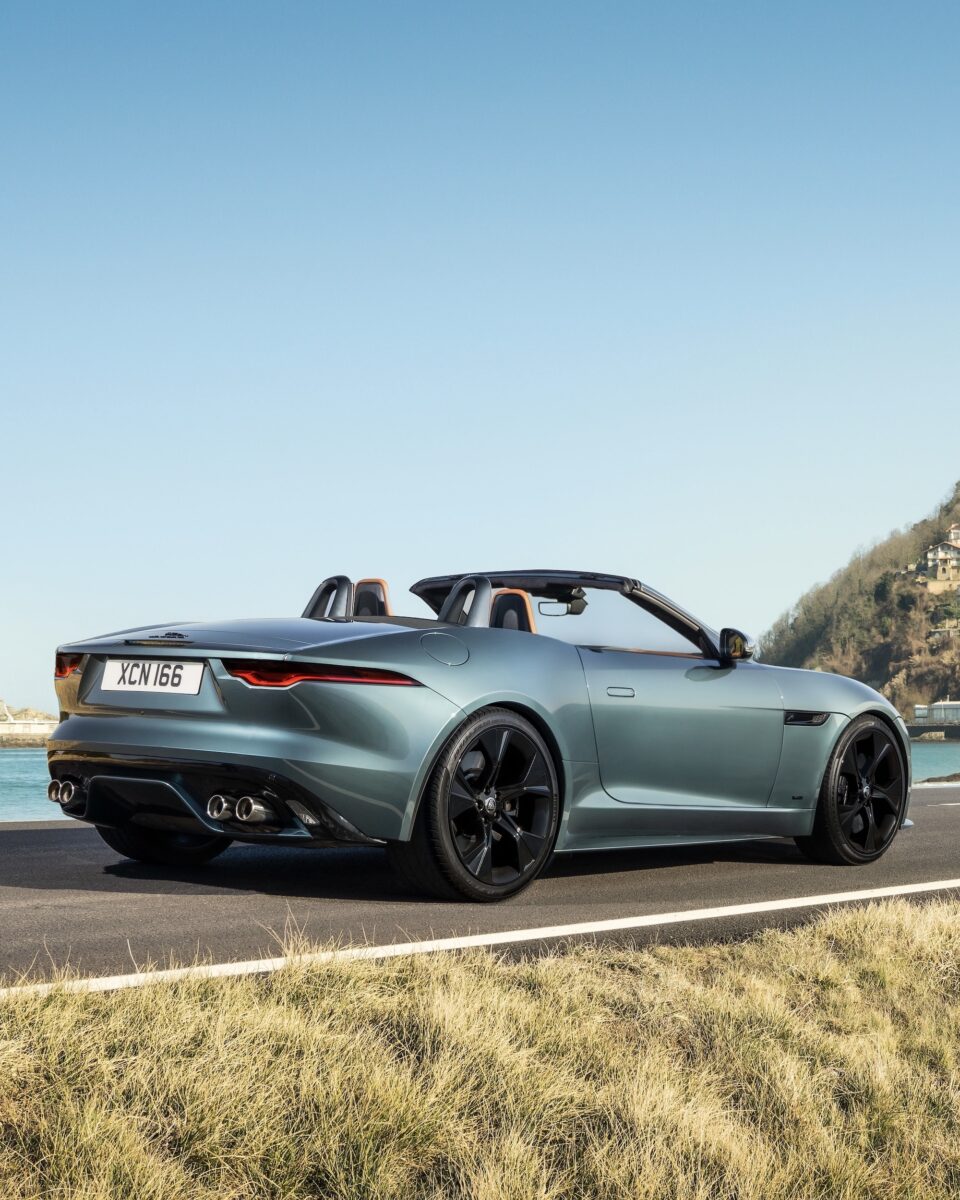
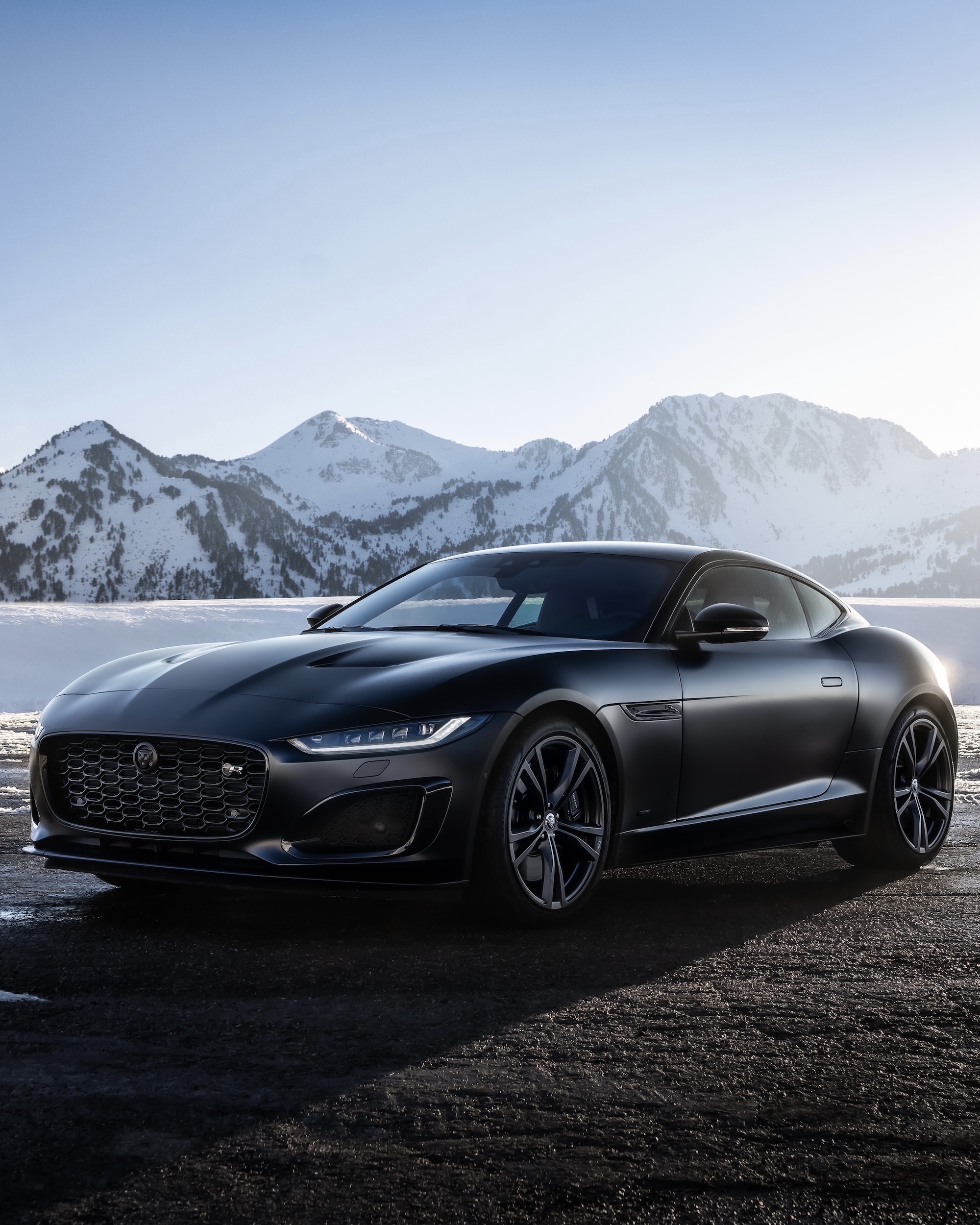
But the key kicker here is that it’s not just curtains for the F-Type, it’s the end of the road for Jaguar internal combustion engines entirely; a 75-year legacy that began with the record-breaking XK120 that first took to the streets in 1948 as the world’s fastest production car.
This is what made our mammoth 48-hour road trip from the calm shores of the Mediterranean Sea to the mighty Atlantic Ocean such a uniquely unmissable opportunity. Least of all because this launch wasn’t really a ‘launch’ at all. Aside from a pair of (inevitably very valuable) final edition F-Types – the 75 and R75 – there was nothing particularly new to be seen here.
Our expedition from Barcelona to San Sebastian was essentially a bit of fanciful fun dreamt up by a team of passionate Jaguar execs to appropriately close the petrol chapter before the slate was wiped clean. Because incredibly – and as soon as 2025 – Jaguar is about to become an all-electric automaker.
And while we’ve been assured that a phoenix will rise from the ashes in the form of an exciting, electrified future, it wouldn’t be fair for such a consequential milestone to breeze by without giving the F-Type the emphatic send-off it deserved. Our two-day journey was a two-player kind of mission, which began in the forecourt of the Sabatic Hotel in Sitges, a sleepy seaside town just south of Barcelona.
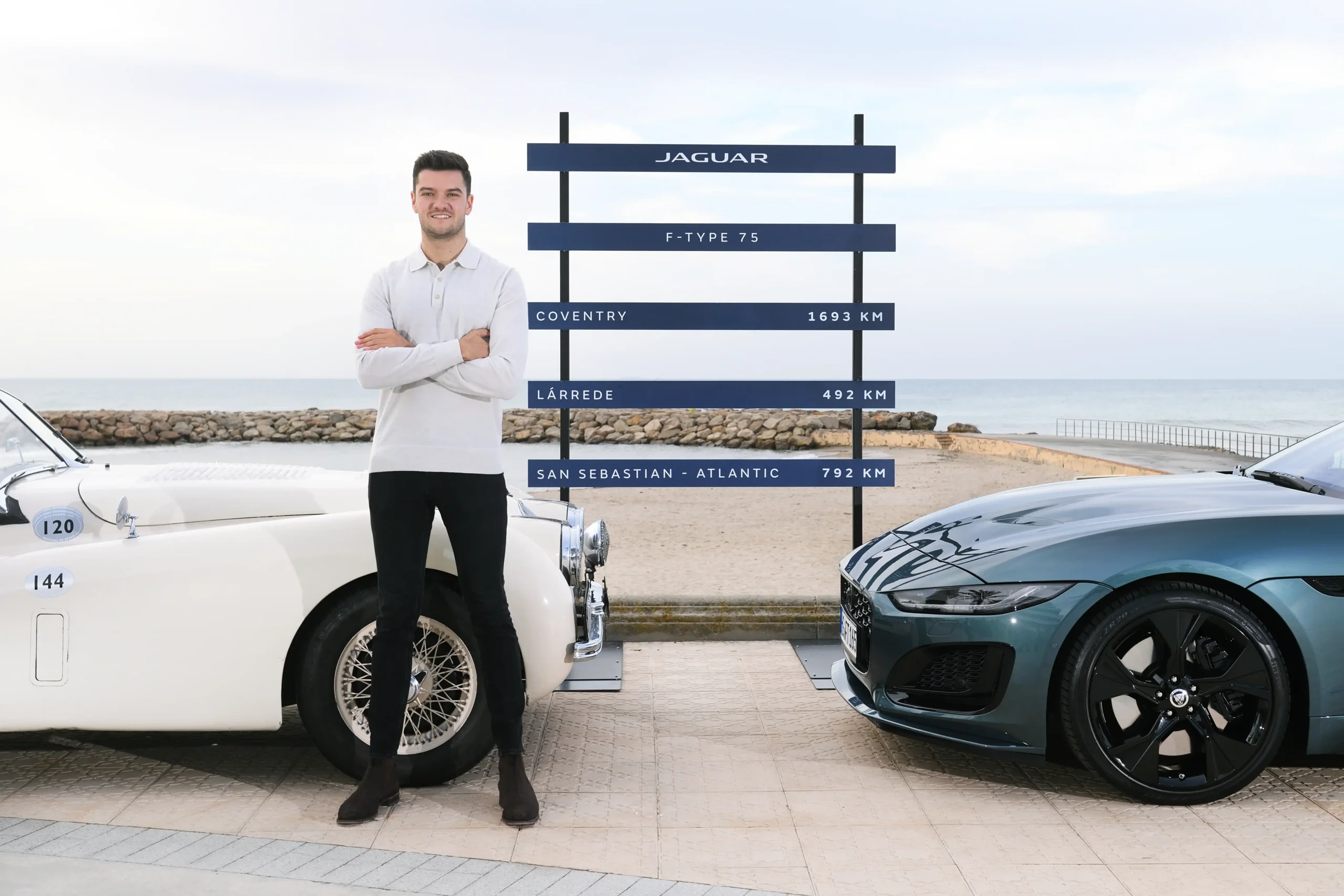
Player one was the standard F-Type 75 Convertible, although there’s rarely anything ‘standard’ about a 331kW supercharged V8 that solely powers the rear wheels. Draped in a drop-dead gorgeous ‘Giola Green’ (a custom colour for the 75 editions sourced from the teal limestone waters of the Greek Islands), and finished with a mocha tan interior, this regular tune quickly became one of the most captivating specs I’d ever seen in the metal. Yours from circa AU$188,000.
Player two dialled the badass scale up to 11. Similarly supercharged but undeniably more savage was the 423kW all-wheel-drive R75 coupe in a menacing ‘Ligurian Satin Black’, an option box that’ll set you back nearly $20,000 to tick. Clocking in above the standard tune by another hundred grand (or so) unequivocally made this weapon the F-Type to end all F-Types.
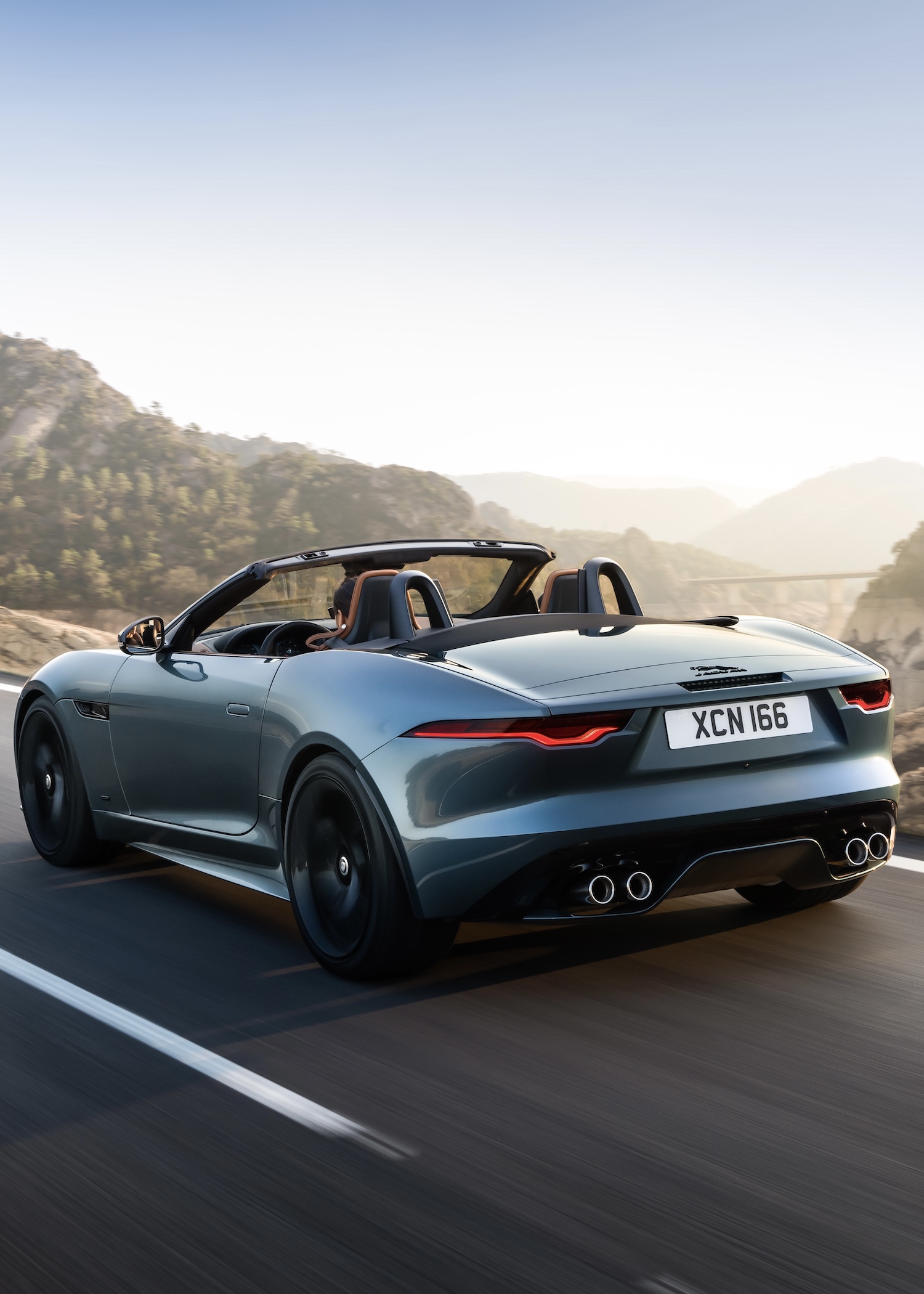
But day one called for player one – nearly 500 kilometres of challenging mountain roads in the rear-wheel drive convertible. No complaints were to be found here.
After a brief photo opportunity on the coast, we hustled to ensure enough kilometres were deleted off the day’s itinerary before sundown. Punching out of Barcelona on some truly immaculate freeways, we rounded the bend at Montserrat and began our climb into the shadows of the Pyrenees.
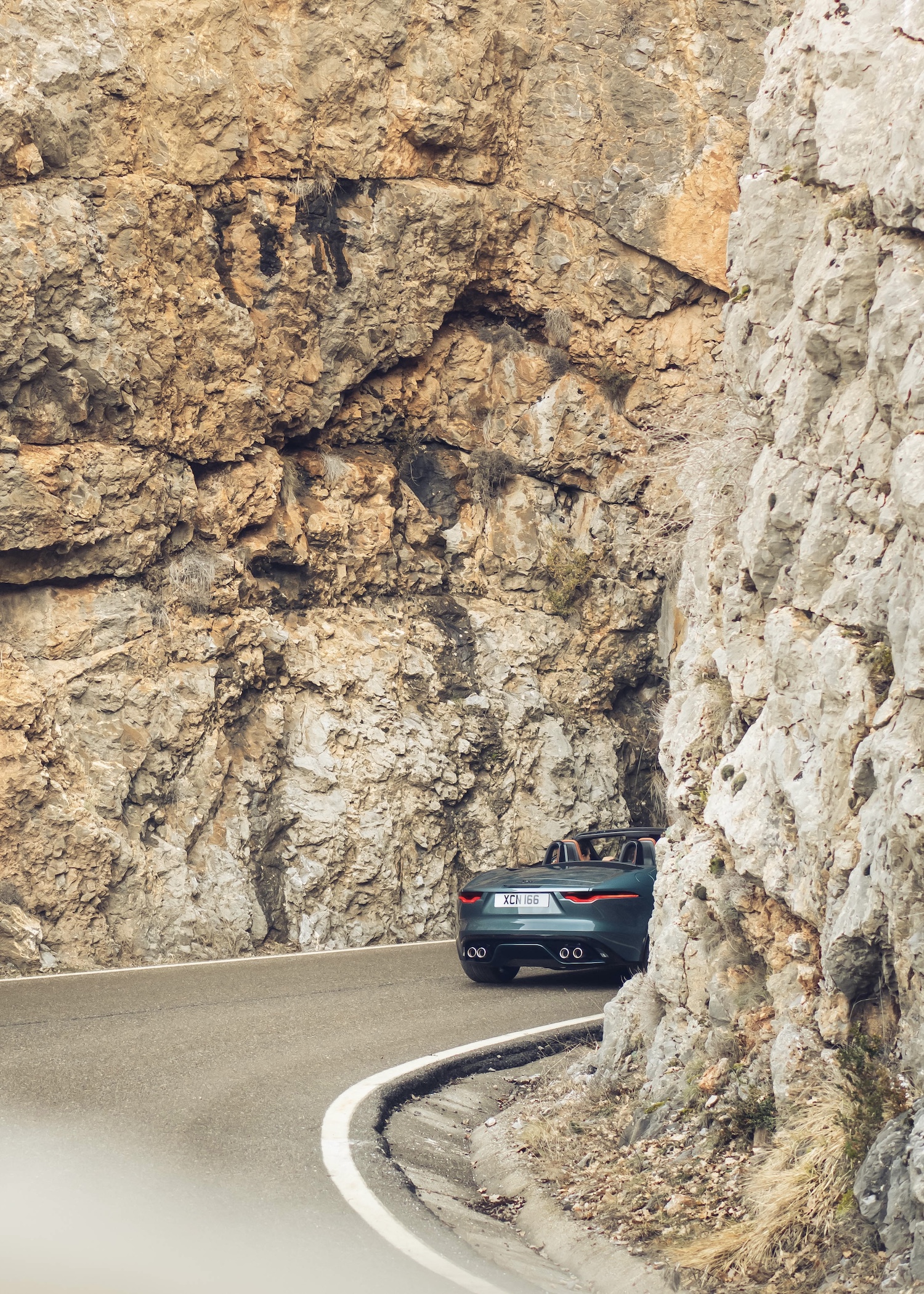
The familiar bark of the supercharged V8 grew in ferociousness with every turn, inducing nothing but beaming ear-to-ear smiles from myself and my driving partner. I’ve said it before and I’ll say it again – the F-Type’s exhaust note is easily the most outrageous, spine-tingling noise from a V8 on the road right now. Screaming through tunnel after tunnel, I became more and more baffled as to how it’s managed to legally dodge decibel limits around the world throughout its decade-long tenure.
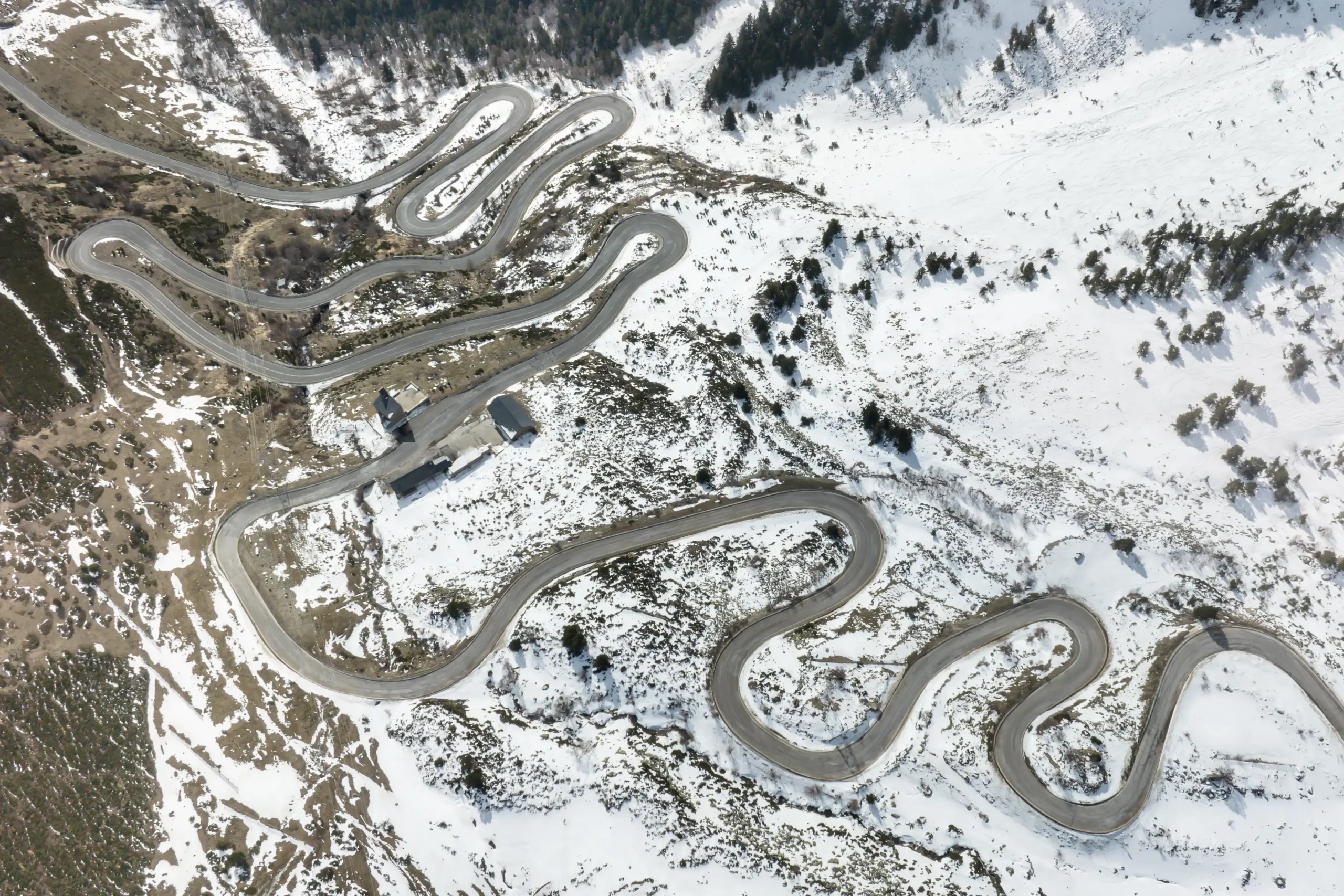
As the roads became more challenging, they became infinitely more spectacular. For years I’ve dissected driving roads all across Europe on Google Earth. I began to doubt if these mythical mountain passes actually existed, or if I’d ever get a chance to drive them in something worth boasting about to the grandkids (whether they wanted to hear the story again or not).
Enter Bonaigua Pass, a zigging and zagging alpine road that unlocks access to Spain’s most expensive ski resort and the French side of the Pyrenees just beyond. In this environment, the F-Type 75’s modest power output in comparison to its beefed-up sibling was actually a blessing. Any more than 331kW and the rear-wheel drive convertible would have had even the most seasoned drivers’ knickers in a twist.
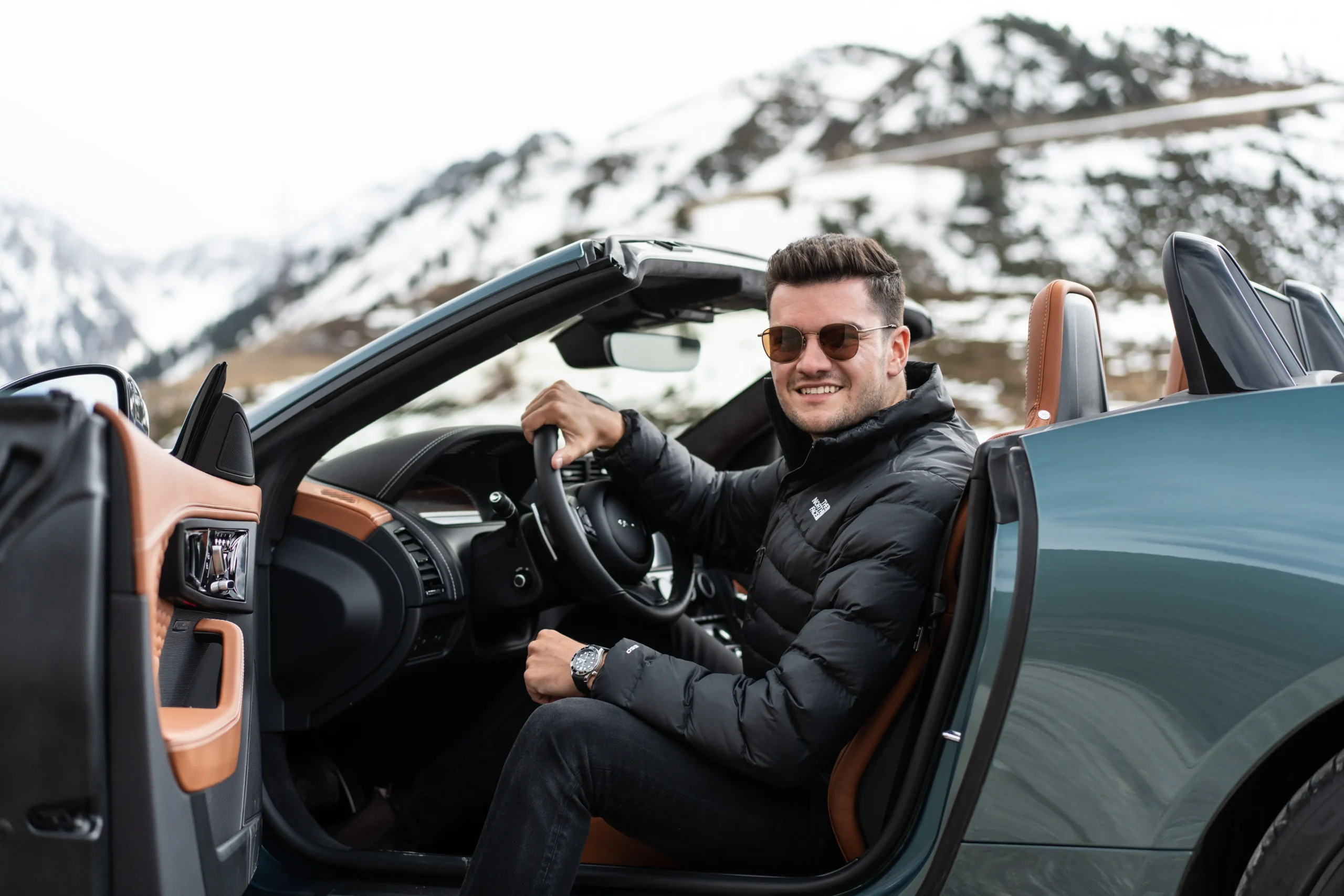
But these are the moments that make you feel most alive, and for me, few cars have triggered such a visceral, heartbeat-skipping response more frequently than the F-Type. Throw a sharp alpine breeze into your face softened by a warm spring sun, and I couldn’t think of a more appropriate application of a rear-wheel drive convertible sports car than right then and there as we approached 2027 metres of elevation.
The road down to our chalet accommodation in the foothills was just as enjoyably messy – as if someone closed their eyes shut and squiggled a random line on a map to create it – with plenty of intermittent tunnels to keep us sonically entertained.
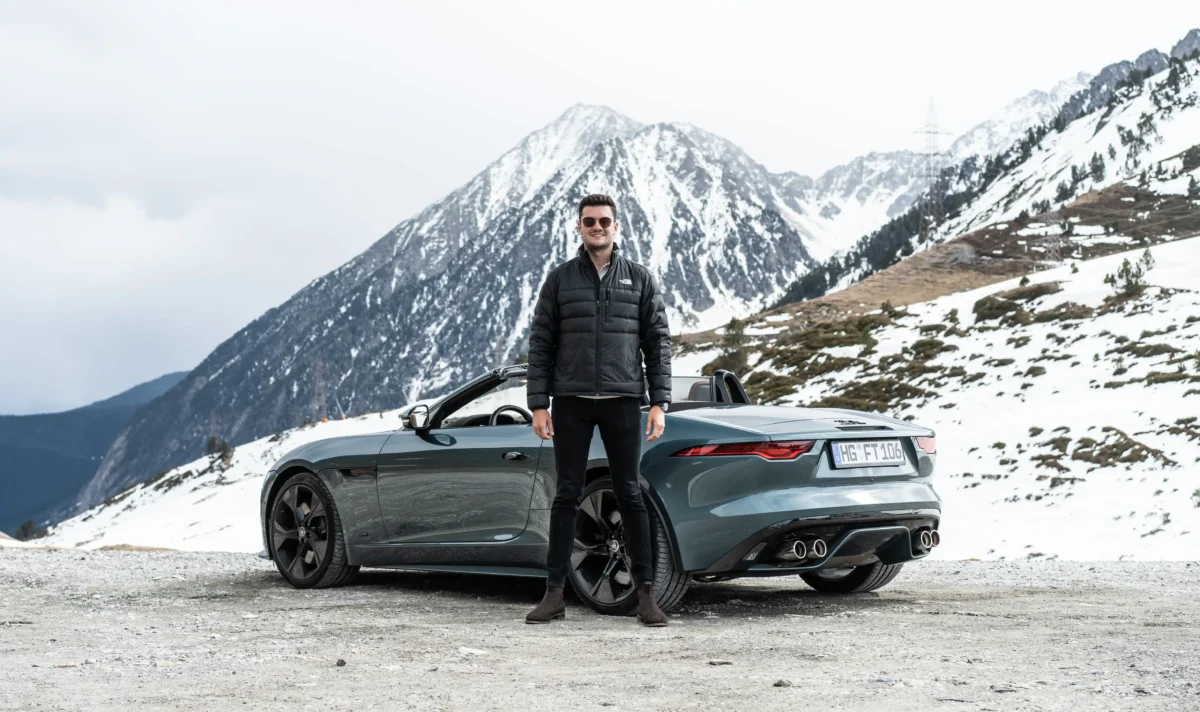
Under braking, the 75 was getting the job done, albeit with a stamping of the brake pedal that at times felt a little spongey. It’s forgivable in this less powerful tune, but swapping into the R75 the following day made it clear that carbon ceramics (a very expensive but nonetheless available option), were almost a non-negotiable for anyone who enjoys a seriously spirited drive.
The only other minor gripe I had with the 75 was that I didn’t think the front of the car gave enough feedback in the steering to confidently push it out of the corners. Most would argue this is forgivable in a rear-wheel drive machine and just makes the drive all the more hair-raising. In the R75 it’s a non-issue thanks to its mighty all-wheel-drive system.
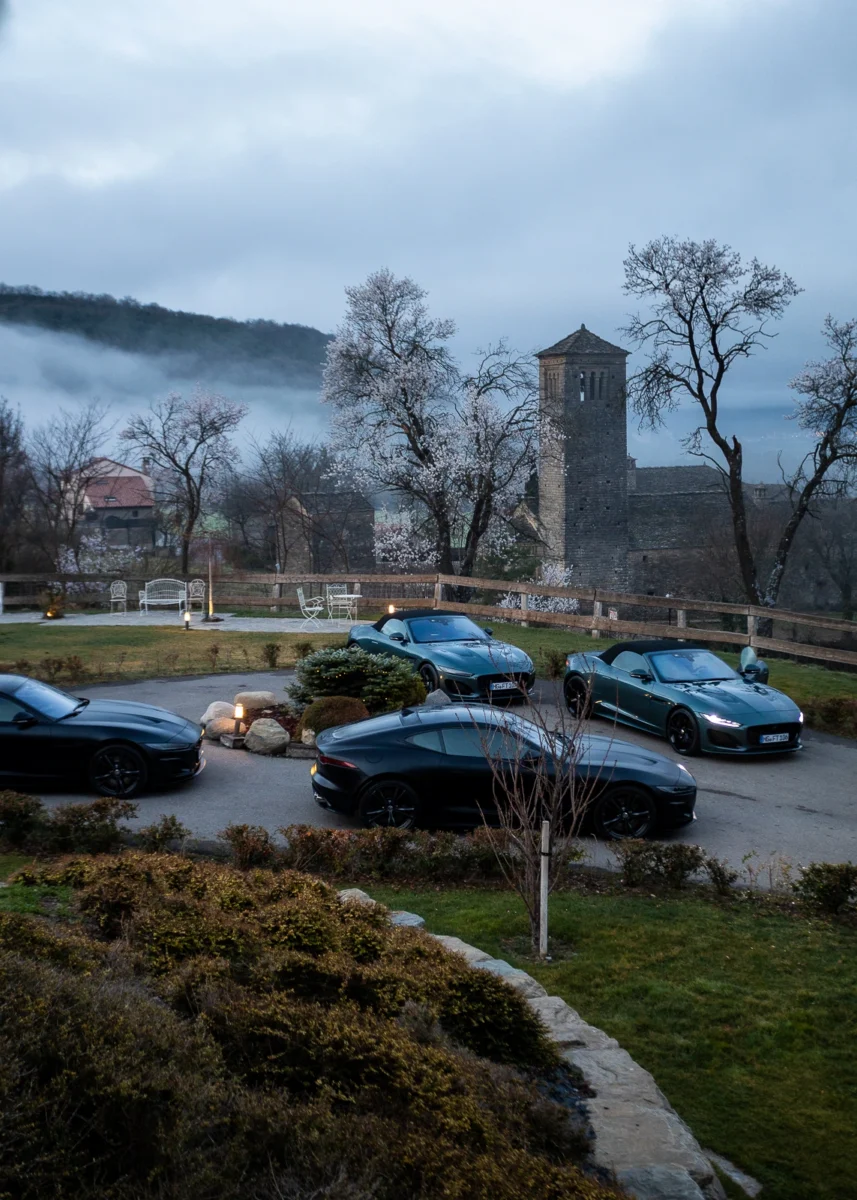
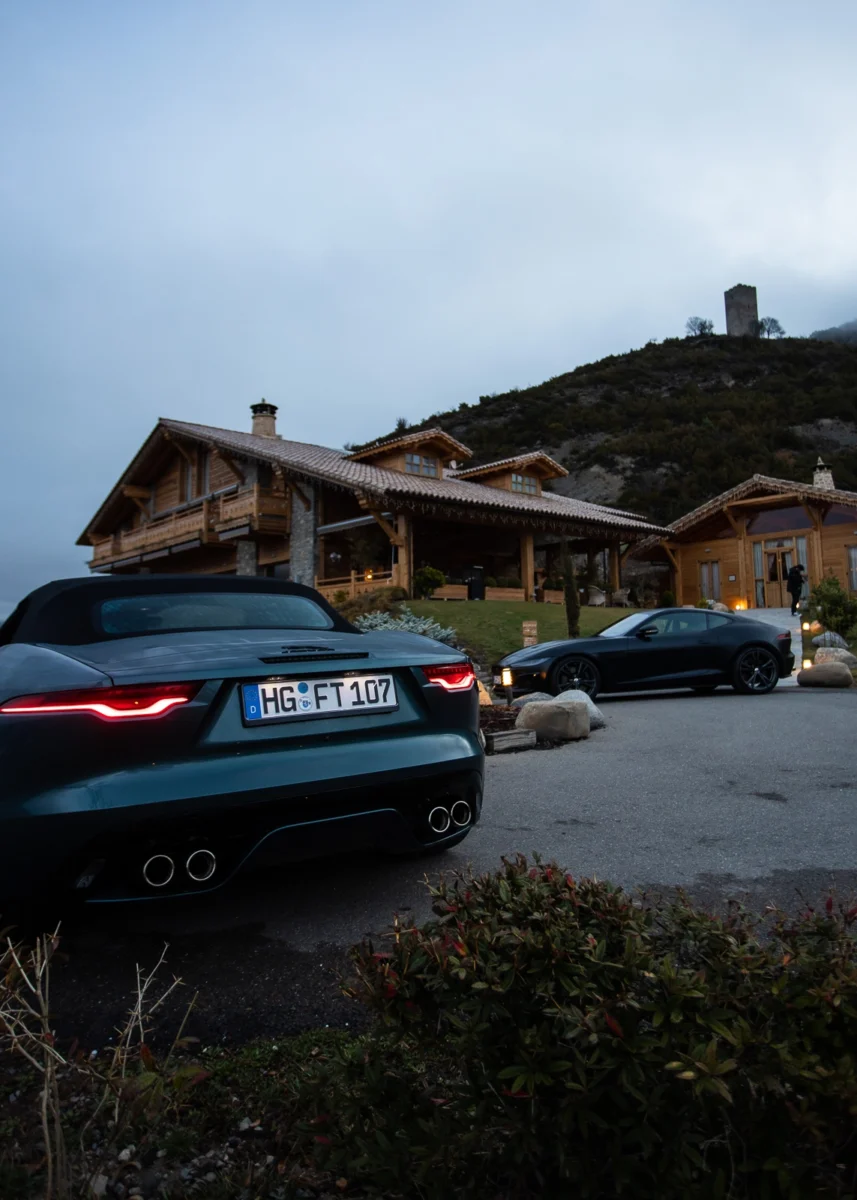
The following morning was a foreboding one. The stunning silhouettes of eight cars at idle glowed in the mist that enveloped our chalet. Church bells rang through the nearby 15th-century village of Lárrede as if to signal the sombre end to our time with the F-Type.
Day two called for the darker, more menacing R75 coated in one of the most impressive matte black finishes I’ve ever seen. At $288,000 or thereabouts, it’s the flagship of the waning fleet, and I’ll say it upfront right now, it’s also the most refined and enjoyable F-Type I’ve driven yet.
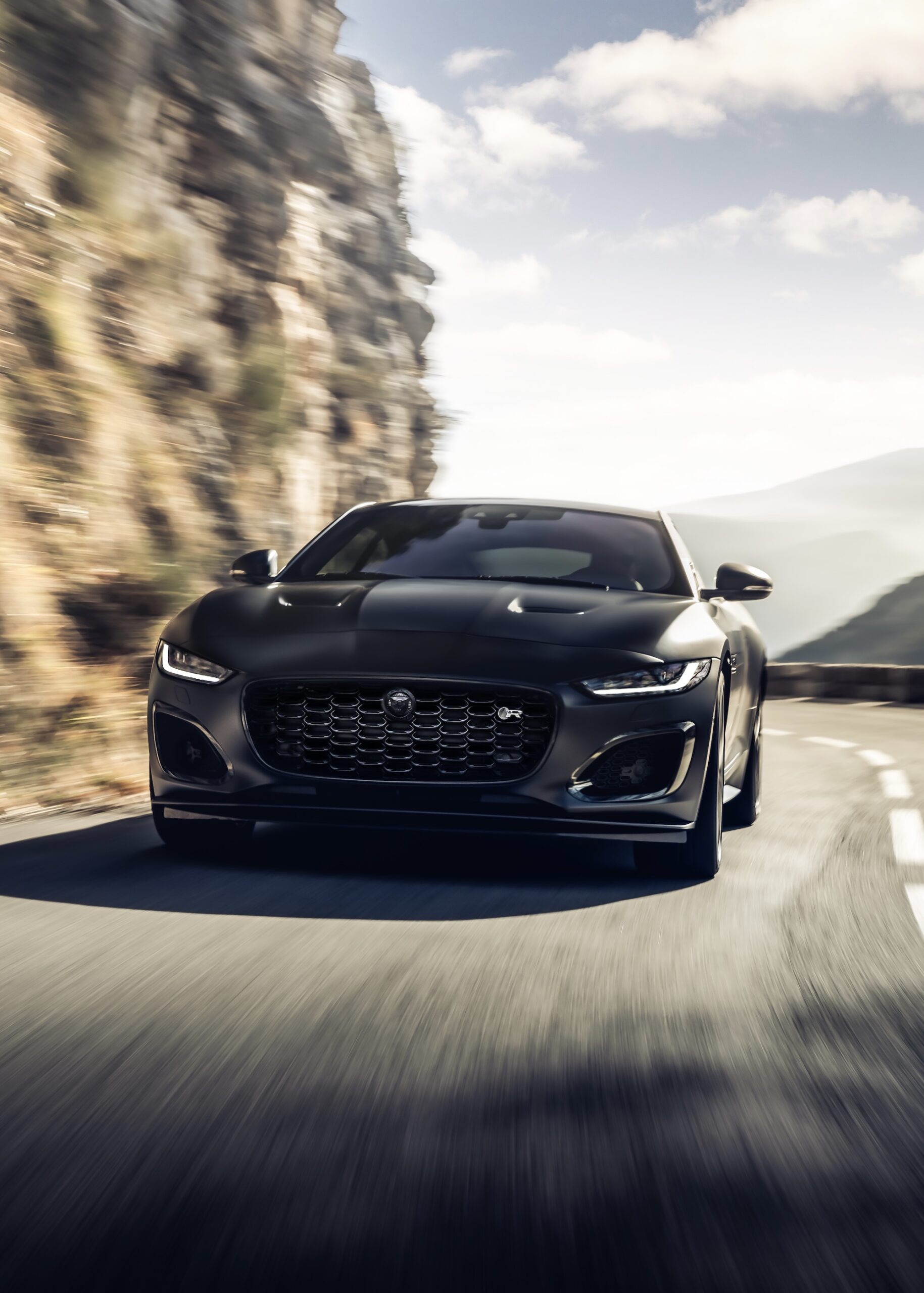
The pickup of seemingly endless power – even at high speeds – was linear and unrelenting. At no point did the 423kW of juice run out of oomph on the straight and fast backroads towards Pamplona. Ducking up into the hills via Coronas Pass just made it more obvious that the magic of the R75’s all-wheel-drive configuration was the sweet spot in the range, unlocking buckets of more fun with infinitely more confidence. Sure, it’s a fair whack more expensive, but if you’re buying the last internal combustion engine Jag will ever make, you’re listening to your heart, not your head.
With fewer outside distractions than we had in the convertible, the coupe gave us a moment to appreciate the cabin of the F-Type, which, after 11 years of smoothing the edges, is a sublime place to be. The exceptional visibility afforded by surprisingly large windows, a sunroof, and a near-perfect driving position left us with a commendable situational awareness that I didn’t fully appreciate until driving the coupe.
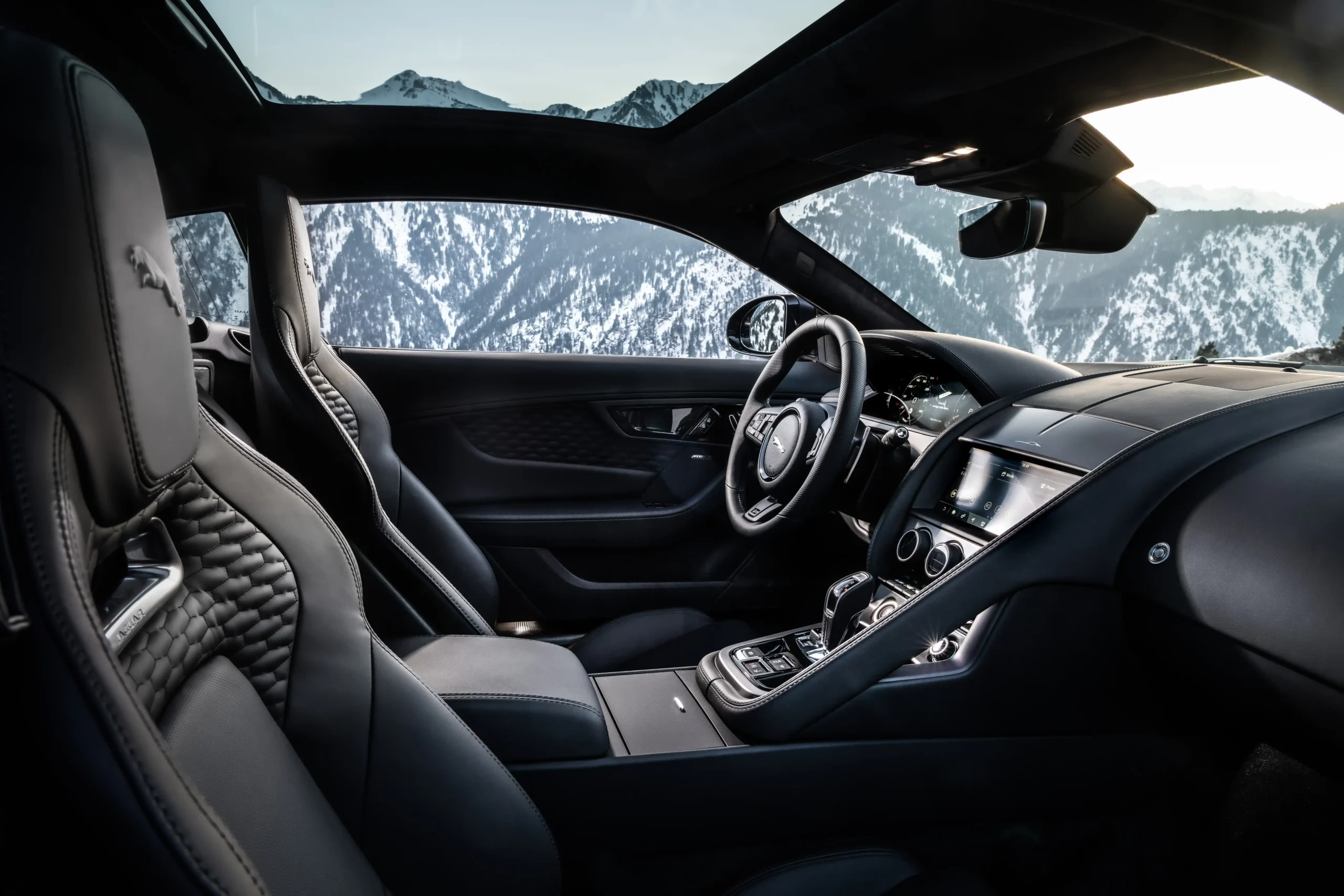
Not a single surface inside or outside our R75 was any colour other than black, including the ebony suede trim and supremely comfortable Windsor leather upholstery. A killer spec that seems like the only appropriate combination for the hungry R75 in coupe form.
Low clouds closed in while we navigated the sweeping roads towards San Sebastian; the landscape reminding me of the F-Type’s home turf back in Northern England or Scotland. With a twinge of unspoken sadness, we played the supercharged V8 like an instrument, over and over, appreciating every last snap, crackle and pop the bellowing swan song left in our wake.
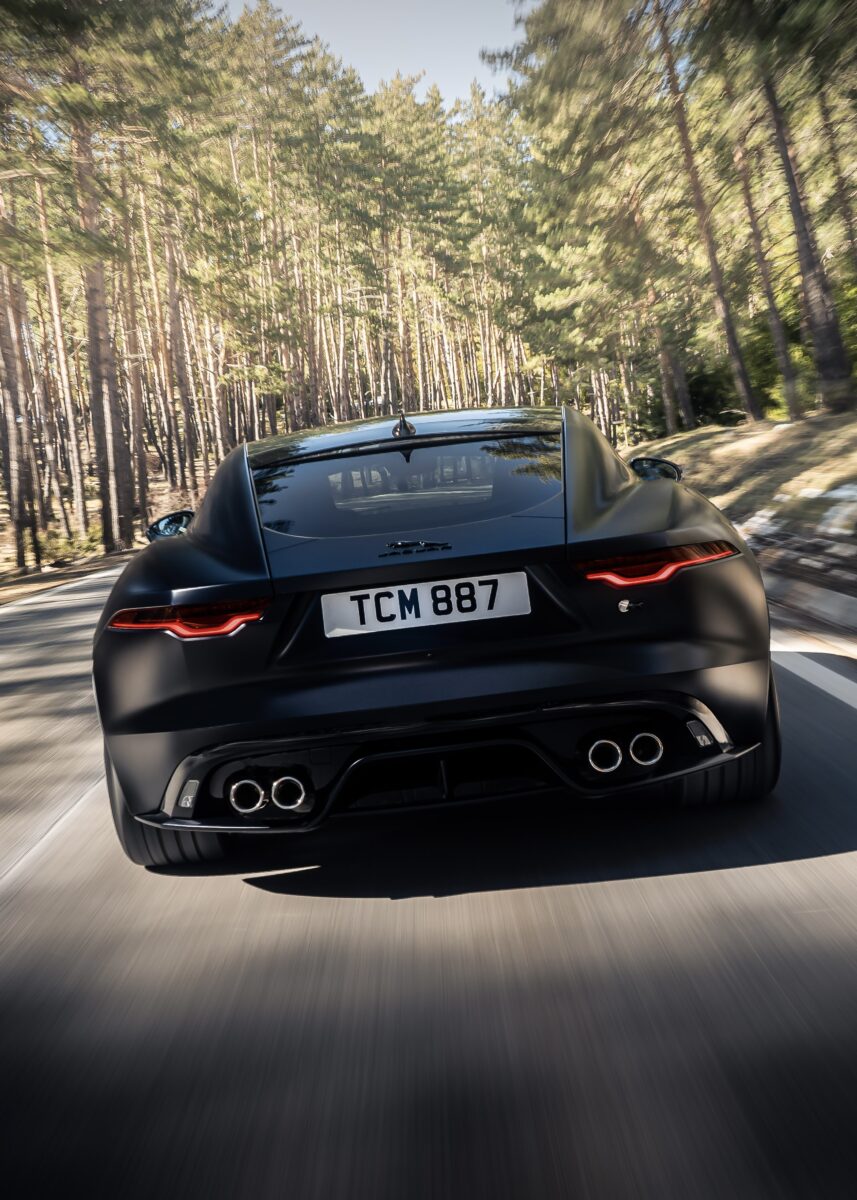
Just by coincidence, the F-Type is the car I’ve likely spent the most time in across my many years with Boss Hunting. And this is not an obituary I ever thought I’d be writing. When I was given the keys to a V6 F-Type as a young buck many years ago, constantly picking my jaw up off the floor when blasting around the local roads of Sydney’s Royal National Park, I never imagined I’d be fortunate enough to see the end of it all on the wild roads of the Pyrenees.
The F-Type will always be adored for its unashamedly brutish character, classically British heritage and pure joy-inducing driving experience. It also goes without saying, in my opinion, that it boasts the most attractive rear end of any two-seater sports car on the market. If Jaguar has ever come close to reaching perfection, it’s this superb R75 edition that’s got it there.
For the majority of its lifespan, the front end, with respect to both looks and driving dynamics, perhaps left something to be desired. But the F-Type’s eleventh hour is not the time nor the place to unpack its shortcomings or draw comparisons to its rivals. All the adoration and praise for what this car and its predecessors have achieved is nothing but deserved, and if this final creation is all she wrote for Jaguar’s internal combustion era, then the F-Type 75 is a very bloody good place to end it.
